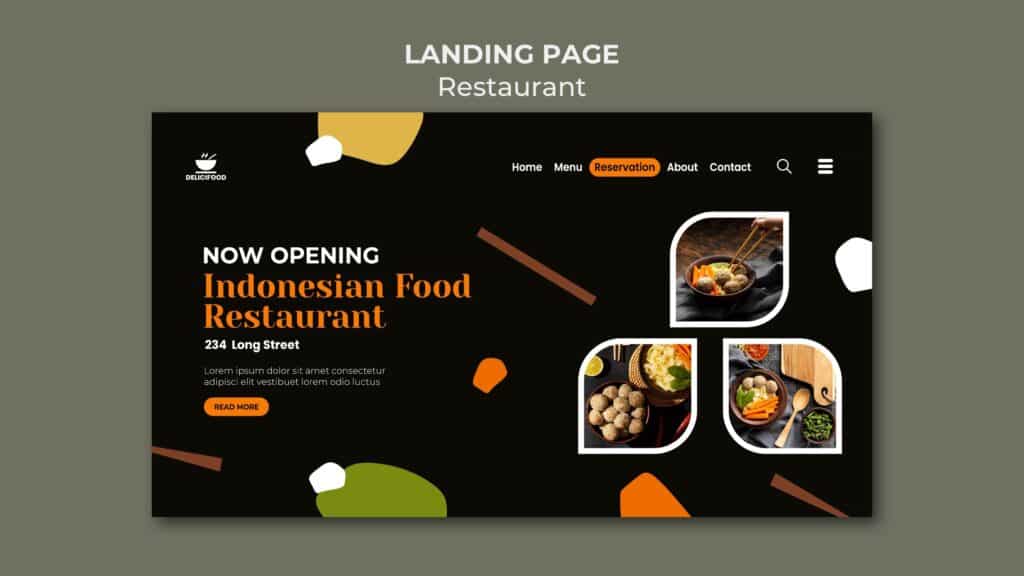Best Restaurant Website in Florida
In today’s digital world, having the best restaurant website isn’t just a luxury; it’s a necessity. Your restaurant’s online presence acts as a virtual gateway, inviting food enthusiasts and customers to explore your offerings, ambiance, and story before stepping foot through your doors. A well-designed restaurant website doesn’t just showcase your menu; it tells a story, engages the audience, and builds a connection that leads to customer loyalty.

Why Your Restaurant Needs a Professional Website
Customers today are tech-savvy and rely heavily on online platforms for dining decisions. The best restaurant website can:
- Boost Online Visibility: Appearing in local search results ensures your restaurant is discovered by people actively seeking dining options nearby.
- Showcase Your Unique Brand: A website allows you to reflect your restaurant’s personality, style, and values.
- Simplify Reservations: Features like online booking make it convenient for customers to reserve tables.
- Display an Interactive Menu: Highlight your specialties, pricing, and seasonal offers in an attractive format.
- Improve Customer Engagement: From blogs and newsletters to event updates, a website keeps your audience informed and involved.
Key Features of the Best Restaurant Website
A truly effective restaurant website includes:
1. Stunning Visuals
High-quality images of your signature dishes, cozy interiors, and lively events can leave a lasting impression. These visuals create an emotional connection and a desire to experience your restaurant.
2. Mobile Optimization
More than half of internet users browse on mobile devices. A responsive, mobile-friendly design ensures that your website performs seamlessly across all screen sizes, enhancing the user experience.
3. SEO Optimization
The best restaurant website incorporates strategic SEO practices to rank high on search engine results. By using keywords like “best restaurant near me,” “top dining spots,” or “family-friendly restaurants,” your website can attract more organic traffic.
4. Easy Navigation
A user-friendly interface makes it simple for customers to find essential information like menus, location, hours of operation, and contact details.
5. Online Ordering & Reservations
Incorporate features that allow customers to order food for delivery or make reservations with ease. This convenience can significantly boost sales and improve customer satisfaction.
6. Customer Reviews & Testimonials
Displaying glowing reviews and testimonials builds trust and credibility, encouraging new customers to try your restaurant.
7. Engaging Content
A blog section featuring stories about your restaurant, recipes, or local events can enhance audience engagement and improve your site’s SEO.
How to Create the Best Restaurant Website
Step 1: Identify Your Brand Identity
Your website should reflect your restaurant’s brand. Whether you’re a fine dining establishment, a cozy café, or a trendy bar, ensure that your site’s design elements like colors, fonts, and layouts align with your identity.
Step 2: Focus on User Experience (UX)
Ensure your website is easy to navigate, loads quickly, and provides relevant information. Clear call-to-action buttons like “Reserve Now” or “Order Online” should guide users effortlessly.
Step 3: Invest in Professional Photography
Pictures speak louder than words. Invest in professional photography to showcase your dishes and interiors in the best light possible.
Step 4: Leverage Local SEO
Optimize your site for local searches by including your address, local keywords, and Google My Business integration. This strategy helps your restaurant appear in local map searches and “near me” queries.
Step 5: Utilize Social Media Integration
Link your website to social media platforms. This cross-platform presence ensures that your customers can easily follow updates, promotions, and events.
Examples of the Best Restaurant Websites
- Fine Dining Elegance: Websites for upscale restaurants often feature minimalistic designs, soft colors, and elegant typography.
- Rustic Charm: Farm-to-table eateries and rustic restaurants often use earthy tones, textured backgrounds, and large, inviting photos.
- Trendy & Vibrant: Websites for trendy cafes and bars might opt for bold colors, dynamic animations, and quirky elements.




hi